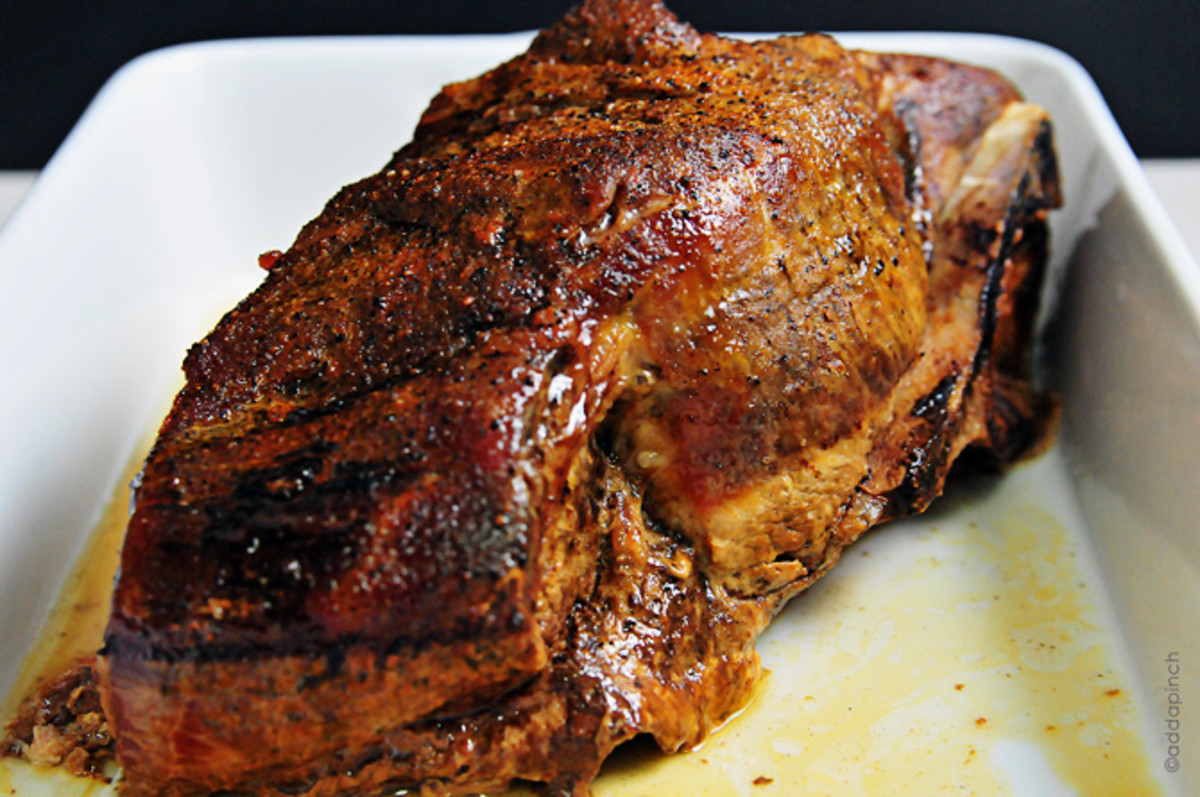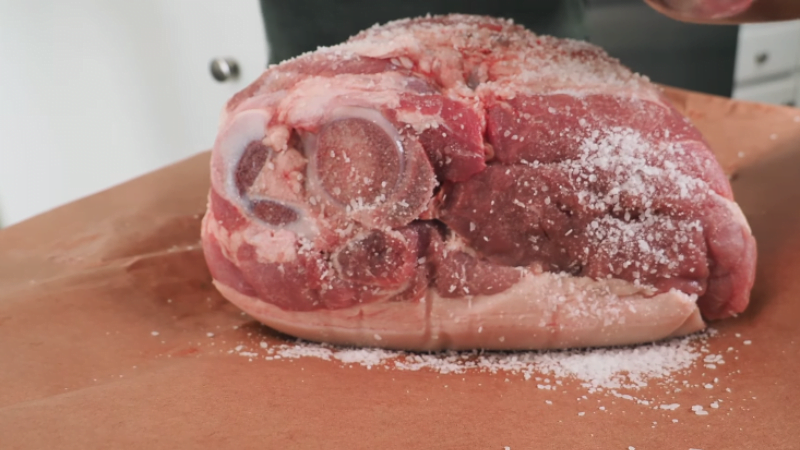Cooking pork shoulder at 250°F in the oven results in tender, flavorful meat that’s perfect for various dishes. In this guide, we’ll delve into the process of slow-cooking pork shoulder to perfection by answering the question “How long to cook pork shoulder in oven at 250?”
Reduce the oven temperature to 250 degrees Fahrenheit. Cook the pork butt for approximately 6-8 hours, or until cooked through and falling apart tender. If desired, broil for a few minutes to create a crunchy crust. Rest the meat for 20 minutes before serving.

Bone In versus Boneless Pork in pork shoulder cook
| Bone-in pork shoulder | Boneless pork shoulder |
| Refers to the cut that includes the shoulder blade bone. | Offers convenience and ease of preparation. |
| Adds flavor to the meat during the cooking process. | Easier to handle and carve after cooking. |
| Can contribute to a richer taste. | More versatile in terms of cooking methods. |
| Distribute heat more evenly. | Allows for more flexibility in seasoning and flavoring the meat. |
| Help retain moisture and enhance tenderness. |
Whether you choose bone-in or boneless pork shoulder depends on personal preference and the specific recipe or cooking technique you plan to use. Both options can yield delicious results, so consider factors such as convenience, desired flavors, and the cooking method you prefer when cook your pork shoulder. You may want to know about what is pork steak – a common cut of pork shoulder.
How to slow cooking the pork shoulder in the oven?
Cooking a delicious pork shoulder in the oven is a flavorful and satisfying culinary endeavor. With a few simple steps, you can achieve tender and juicy results that will leave your taste buds longing for more. Here’s a straightforward guide to cooking the pork shoulder in the oven:

- Preheat your oven to 250 degrees F, ensuring it reaches the desired temperature for optimal cooking.
- Take your boneless pork shoulder, and place it in an ovenproof baking dish or roasting pan.
- Generously season your pork shoulder in rub with salt and pepper, allowing the seasoning to enhance the meat’s flavor. Drizzle olive oil over the pork to add moisture and enrich the taste.
- Cover the pork shoulder with aluminum foil, creating a sealed environment that helps retain moisture during cooking.
- Carefully place the pork shoulder in the preheated oven and let it cook for approximately 4 hours. As a general guideline, calculate around 40-45 minutes per pound of meat to ensure thorough cooking.
- After the initial 4 hours of cooking, remove the foil to expose the pork shoulder. Return it to the oven and continue cooking for an additional 2 hours at 250 degrees Fahrenheit. This extended cooking time allows the meat to develop a beautifully caramelized exterior while remaining juicy and succulent pork inside.
- Use a meat thermometer to check the internal temperature to ensure the pork shoulder is perfectly cooked. The target temperature should reach 160 degrees Fahrenheit, indicating that the meat is cooked and ready to eat. This temperature ensures a balance between tenderness and doneness.
- Once the pork shoulder has reached the desired temperature, remove it from the oven and let it rest for 10-15 minutes. Allowing the meat to rest ensures that your pork has the juices redistributed, resulting in a more succulent final product.
- With the resting period complete, it’s time to slice the pork shoulder into delectable portions and serve.
Cooking pork shoulder in the oven at a low temperature over an extended period is a fantastic way to achieve a melt-in-your-mouth experience.
How long does it take to cook a 10 lb Boston butt at 250 degrees?
FAQ
How long to cook a 4 pound pork roast at 250 degrees?
How long to cook a 7 pound pork shoulder at 225?
How long does it take to cook an 8 pound pork shoulder?
How long do you cook a Boston butt in the oven?
The general rule of thumb for cooking a Boston butt in the oven is to maintain an oven temperature of 250°F (120°C) and allow approximately 1.5 to 2 hours per pound of meat. This low and slow cooking method ensures that the connective tissues in the pork shoulder break down, resulting in a tender and succulent texture.
What temperature should a Boston butt be cooked at?
This low and slow cooking method helps to break down the connective tissue and render the fat, resulting in a tender and succulent pork roast. It is important to use a meat thermometer to ensure that the internal temperature of the Boston butt reaches 190-205°F for the best results.
Can you cook a Boston butt in a convection oven?
Yes, you can cook a Boston butt in a convection oven by adjusting the cooking time and temperature according to the manufacturer’s instructions. It may result in a faster cooking time, so be sure to monitor the internal temperature of the meat closely.
How long does it take to cook a butt?
Brine time: 12 to 48 hours. Cook time: 14 to 16 hours (possibly longer). My timing tips are to prep the butt a few days ahead (brine) and cook overnight. Putting in the oven just before bedtime is perfect if serving this for lunch the next day. If making this for dinner, I will put the butt in at 5:00 a.m.
